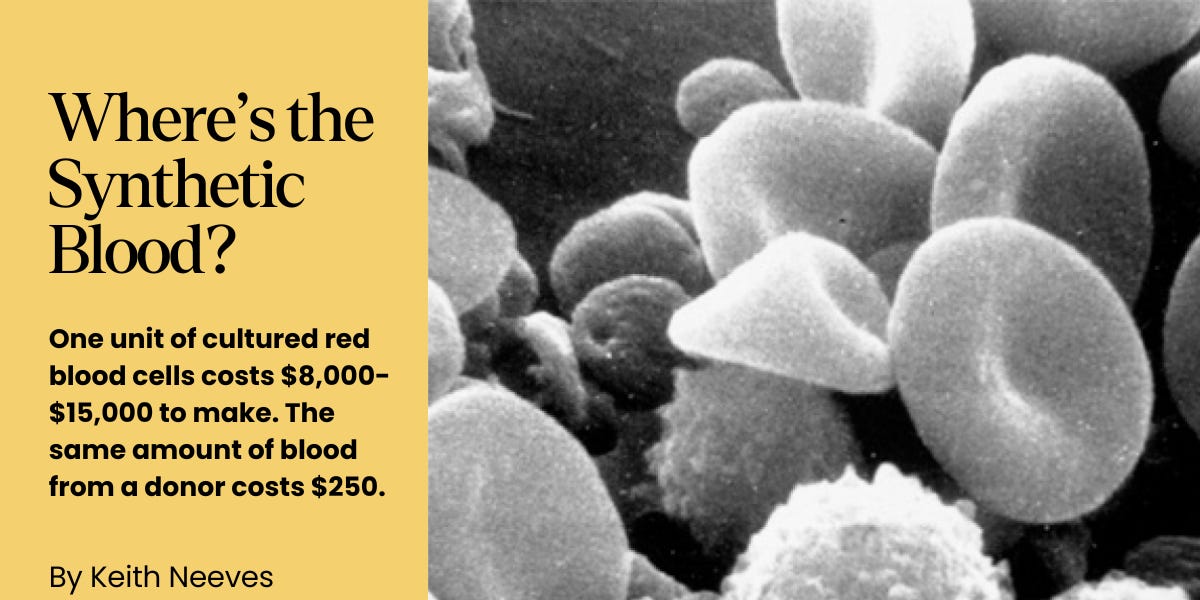Where's the Synthetic Blood?

🌈 Abstract
The article provides a history of blood transfusions and discusses the challenges and potential solutions for scaling up the creation of synthetic blood.
🙋 Q&A
[01] History of Blood Transfusions
1. What are the key milestones in the history of blood transfusions?
- The earliest documented attempts at blood transfusions involved the transfer of blood from animals to humans in the 17th century.
- In the early 20th century, the discovery of blood types by Karl Landsteiner was a critical step towards understanding why some transfusions failed while others succeeded.
- World War I and World War II led to major advancements in blood transfusion and storage, including the development of blood banks and the separation of blood into its components.
2. What are the advantages and drawbacks of component therapy compared to whole blood transfusions?
- Advantages of component therapy:
- Plasma transfusions don't need to be blood type matched
- Allows more patients to be treated per unit of blood
- Enables targeted replenishment of specific blood components
- Drawbacks of component therapy:
- Blood cells and plasma proteins are diluted by anticoagulants and storage media
- Can lead to volume overload in patients
3. What are the current challenges facing the traditional blood supply?
- Dwindling pool of donors, especially among younger generations
- Limited shelf life of stored blood products
- Disparities in access to safe blood transfusions, especially in low and middle-income countries
[02] Approaches to Synthetic Blood
1. What are the two main approaches to creating synthetic blood?
- The biologists' approach: Coaxing stem cells into becoming blood cells by growing them in bioreactors that mimic the bone marrow environment.
- The chemists' approach: Synthesizing molecules and particles that mimic the functions of blood cells using methods suitable for large-scale manufacturing.
2. What are the key challenges and limitations of the biologists' approach?
- Difficulty in scaling up the production of cultured blood cells to clinical quantities
- High costs associated with the culture media and growth factors needed to grow the cells
3. What are the advantages and limitations of the chemists' approach?
- Advantages:
- Cheaper and easier to manufacture compared to cultured blood cells
- Many of the artificial blood products have already been tested in animal models
- Limitations:
- Challenges in replicating the full complexity and functionality of natural blood
[03] Future Outlook and Applications
1. Where are synthetic blood products most likely to be used first?
- Cultured blood cells may first target people with rare blood types or those requiring regular transfusions, as well as non-transfusion applications like wound healing.
- Artificial blood cells made using the chemists' approach are more likely to be used as a bridge therapy during transport to the hospital, rather than as a long-term blood substitute.
2. What are some potential future applications of synthetic blood beyond transfusions?
- Engineered red blood cells could be used for diagnostics and drug delivery applications.
- Bio-hybrid systems combining synthetic blood components and microbots could have novel medical applications.
3. What factors will determine the timeline for the widespread adoption of synthetic blood?
- The success of ongoing clinical trials, such as the RESTORE trial and DARPA's FSHARP program.
- Ability to further reduce the costs associated with culturing blood cells.
- Gaining a deeper understanding of the complex interactions within natural blood.